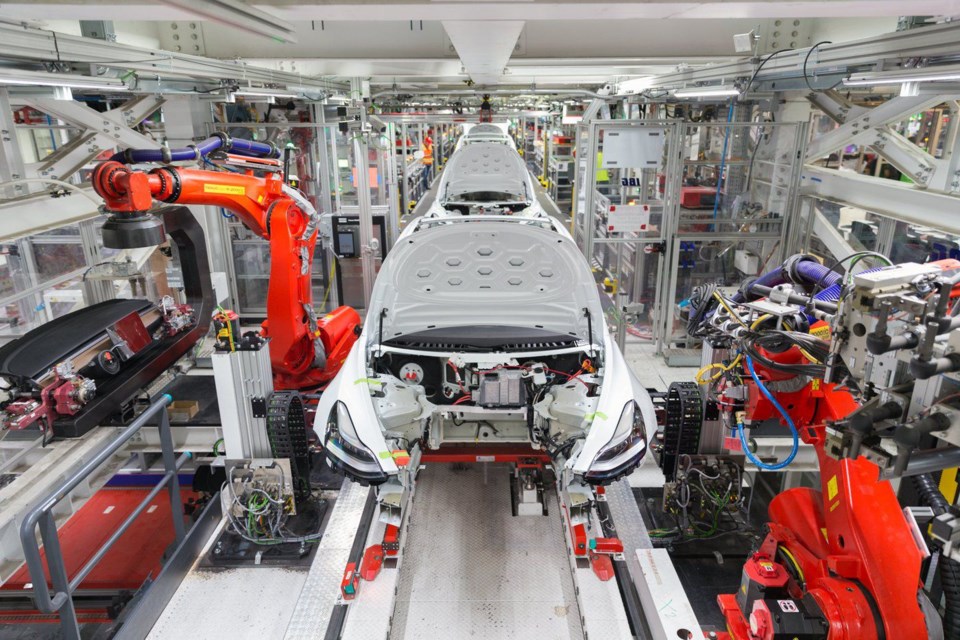China and Europe are winning the “global battery arms race,” seen as a key factor in determining which economies will dominate in a decarbonized future, a parliamentary committee heard Monday.
The House of Commons natural resources committee has embarked on a study of “critical minerals” in Canada — a term referring to the raw materials like lithium, nickel, cobalt, graphite, aluminum and copper that go into making lithium-ion batteries, the standard workhorse of the electric vehicle (EV) and energy-storage world.
Canada has a large domestic supply of these minerals, witnesses told the committee. But they aren't being mined in large amounts, they said. There is little ability in Canada to process the raw material into the components that ultimately go into producing batteries.
“Relative to the European Union and Asia, Canadian battery metals supply chains are currently in their infancy,” said Liz Lappin, president of the Battery Metals Association of Canada.
“However, with surging demand for battery metals to serve the expanding EV supply chain, the market opportunity for Canada is growing.”
In January, the European Commission approved a $4.4-billion package by 12 member states for a project to boost Europe's "battery value chain."
This month, Swedish battery manufacturer Northvolt said it would build Europe’s largest energy-storage factory in Poland.
Meanwhile, China controls four-fifths of the world's refining capacity for lithium-ion battery minerals, as well as over three-quarters of battery cell manufacturing capacity and almost two-thirds of component manufacturing, according to BloombergNEF.
Simon Moores, the London, U.K.-based managing director of Benchmark Mineral Intelligence, said there has been a global rush to build up battery manufacturing capacity, illustrated by almost 200 specialized factories — what EV-maker Tesla calls “gigafactories” — popping up around the world that produce lithium-ion battery cells at scale and at low cost.
“We are in the midst of a global battery arms race," said Moores. “These super-sized battery plants are becoming physical embodiments of a country’s industrial and technological ambition."
A quarter of the cost of an EV is the lithium-ion battery, while four-fifths of the cost of the battery itself is the minerals, metals and chemicals that go into it, he said.
Benchmark estimates that by 2030, China will hold 67 per cent of battery capacity and Europe will hold 18 per cent, while North America will hold 12 per cent.
“While the world’s governments and automakers focus on building EVs and battery plants, a true leader is yet to emerge in building the supply chains to feed them,” said Moores.
The federal government has touted EV manufacturing as a “critical” component of Canada’s climate plan. Automakers like GM and Ford have announced plans to build or retool large-scale EV manufacturing plants in Canada.
The government has also talked up “critical minerals,” promoting a joint plan on the issue with the United States in summer 2020.
Industry representatives say what's missing is more of a managed, coherent strategy to tie together all the different components of a battery supply chain.
“There has to be effort to put in to just co-ordinating everything and making it one sensible, strategic package for developing this industry,” Jamie Deith, chef executive officer of Eagle Graphite Corporation, told the committee.
“In other words — we should be doing this with intent and deliberately ... because that is what’s going to attract investors and what’s going to impress the end users, such as the automakers.”
Flavio Volpe, president of the Automotive Parts Manufacturers' Association, has also tied a billion-dollar commitment from GM to build an all-electric delivery van in Ontario to the assumption that Canada is heading towards a fully domestic battery producing industry.
Natural Resources Minister Seamus O’Regan announced Monday that a new "federal-provincial-territorial task team" is developing an inventory of Canadian “critical minerals” that would help build an "integrated, all-Canadian critical minerals and battery value chain.”
Canada is the world’s third-largest aluminum producer, fourth-largest cobalt producer and fifth-largest nickel producer, according to Natural Resources Canada’s “Canadian Minerals and Metals Plan,” released in 2019.
The plan says the country is also “primed” to meet demand for graphite and lithium.




